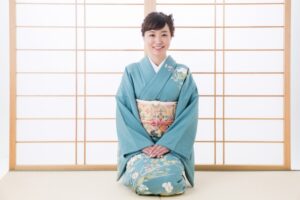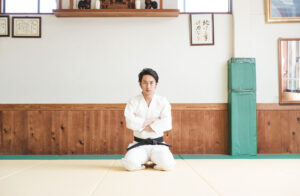Japan has a unique sitting style that has been passed down from ancient times, known as "Seiza." Seiza is a traditional Japanese sitting posture, frequently used in ceremonies and formal settings.

How to Seiza:
- Begin by kneeling on the floor or tatami mat.
- Turn the soles of both feet upwards and rest your buttocks on your heels.
- Straighten your back and place your palms on your thighs.

The Meaning of Seiza:
Seiza is a way of sitting that symbolizes politeness and respect and has been deeply embedded in Japanese culture for centuries. In traditional Japanese homes and tea rooms, it's customary to sit in Seiza without using chairs. However, in contemporary Japanese daily life, few people practice Seiza.
Origins of Seiza:
The exact origin of Seiza is not well-defined, but there are several theories. One theory suggests that because traditional Japanese homes were floored with tatami mats, living on tatami was central, and Seiza was adopted as the most stable way to sit on it. Another theory posits that Seiza, being a restrictive posture, was mandated by feudal lords during the Warring States period for their retainers in their presence, preventing them from drawing their swords in rebellion.

Caution:
If you're not accustomed to Seiza, your legs might become numb. However, with consistent practice, you can adapt to this sensation. Prolonged Seiza can restrict blood flow to the legs, so it's advisable to stretch your legs from time to time.
Conclusion:
Seiza is a traditional Japanese sitting style observed in various contexts. This posture allows one to experience the culture and history of Japan, so it's highly recommended for those visiting Japan. By understanding the history and culture behind Seiza, one can cultivate a deeper sense of respect and gratitude.